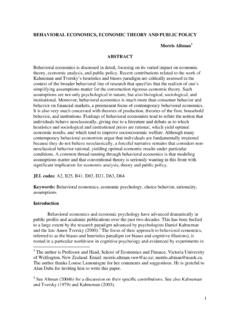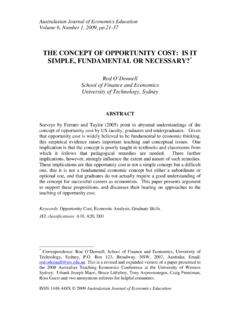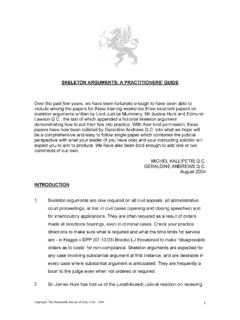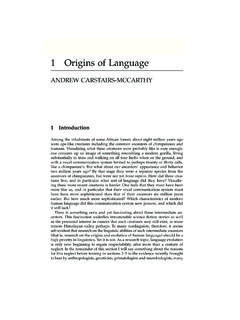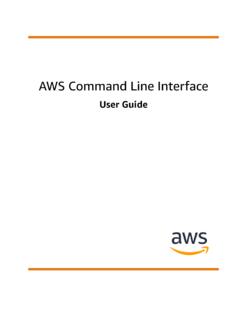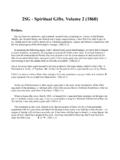Transcription of Annotated Sample Research Proposal: Process and …
1 Rowland, The Learning Hub, Student Services, The University of Queensland 1 Annotated Sample Research proposal : Process and Product Contents Introduction .. 2 A Process for developing a proposal .. 2 Stage 1. A preliminary sorting of ideas .. 2 Stage 2. Further organization of ideas and arguments : A framework of focus questions and/or argument map .. 3 Research proposal Outline in Terms of Focus Questions .. 3 Argument Map .. 3 Stage 3. Write the proposal ! (And revise the organizational framework) .. 5 Sample proposal .
2 5 Title: First-year undergraduate calculus students: Understanding their difficulties with modeling with differential equations.. 6 1. Introduction .. 6 2. Previous Research .. 7 3. Theoretical framework and hypotheses to be tested .. 9 4. Expected outcomes and their pedagogical implications .. 11 5. Methods .. 11 6. Timeline, budget, equipment and staffing requirements .. 13 References .. 13 Further Reading .. 16 Research Proposals in a Nutshell: The basic purposes of all Research proposals are to convince the reader that: (a)the Research project has clear objectives; (b)the Research project is worth doing (it is significant / important in some sense and will make an original contribution to knowledge / understanding in the field) (c)the proposed methods are suitable and feasible; (d)there is a well thought through plan for achieving the Research objectives in the available timeframe.
3 Note that it is not enough to simply describe previous works, your project, and your methods. Rowland, The Learning Hub, Student Services, The University of Queensland 2 Introduction These notes are aimed at helping students write an effective Research proposal . The first part of the notes focuses on a Process which you might find helpful when writing your proposal , while the second part includes an Annotated example of a proposal . The Annotated example aims to help you see in a concrete way what is expected in the different components of a Research proposal .
4 As with all general guides, you will need to work out how to adapt was is given here for the level of sophistication and structure required for your specific proposal . A Process for developing a proposal Of course, a lot of reading, thinking, discussing of ideas with one s advisory team, and even preliminary writing precedes this Process . Stage 1. A preliminary sorting of ideas Feeling overwhelmed by the number of ideas and arguments that needed to be organized, my first step was to do a preliminary sorting of ideas using a mind map which is reproduced below.
5 The main branches of this map were guided by what I know needs to be included in a Research proposal . Some branches of the map, such as methods and the theoretical framework , could benefit from being expanded into their own, individual mind maps. Since such maps necessarily must be kept fairly succinct; their primary job is to trigger reminders in the minds of their creators and so are often somewhat obscure to others. However, I hope you can get the general gist of the contents of the map without further explanation.
6 While I actually did my original map with paper and pencil, the advantage of using a dedicated software program is that as more and more ideas occur to you to be added, it is easy to shuffle things around or change the organizational structure. Created with Inspiration software. Rowland, The Learning Hub, Student Services, The University of Queensland 3 Stage 2. Further organization of ideas and arguments : A framework of focus questions and/or argument map My next step was to organize the components of my mind map into a logical sequence of questions with points / arguments under each question.
7 This outline was built up gradually by first thinking of main headings, then trying to establish the questions to be addressed under each heading, and then finally, putting the points to be made under each question. The result of the first parts of this Process is shown below, though in reality I went from having the framework of questions to starting writing back to developing the argument map when I felt that I wasn t completely happy about how some of my arguments were developing or where they should go. This messy Process reflects the nature of writing at this level of complexity: that writing is often needed to develop thinking and hence initial plans are often only just a first step to get going, but also that there are tools/strategies which can help sort out a mess once one gets into one!
8 (Note that some of you might be happy and able to skip the mind map step and go straight to this step.) Research proposal Outline in Terms of Focus Questions Introduction [Addresses the significance of the Research ] 1. What have been the drivers of the calculus reform movement at the tertiary level? 2. What are the motivations for introducing modeling as part of this reform? 3. Why do reform approaches need a sound Research base in general, and why in particular does using modeling as a reform approach need a sound Research base? 4. What then is the broad aim of the proposed Research ?
9 Previous Research [Addresses questions about originality + uses previous Research as a foundation for further Research ] 5. What Research has already been done in this area? What deficiencies or gaps need addressing? 6. What other Research in related areas has been done that could inform Research on the proposed problem? Theoretical framework and hypotheses [What theories about learning guided the directions taken by the Research and in particular, the hypotheses to be tested?] 7. What assumptions about student learning framed this Research ? 8.
10 What theories about student learning were believed to be of potential use and what hypotheses came out of these theories? Methods 9. What methodological issues needed to be addressed by this Research ? 10. How were the hypotheses tested? Why use multiple methods? 11. How was the Sample chosen and does this choice pose a threat to external validity? 12. How were the findings validated? 13. What ethical issues are raised by the proposed approaches and how will these be addressed? Argument Map Research proposals (and Research papers and theses) should consist of arguments for what is proposed to be done and how it is proposed to be done.
